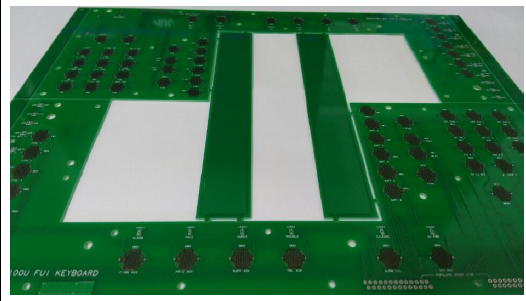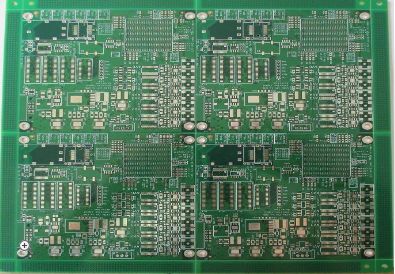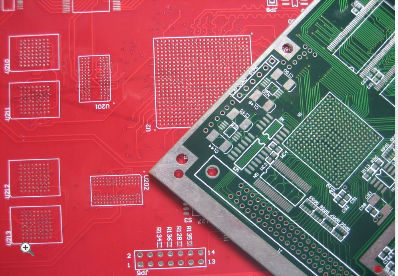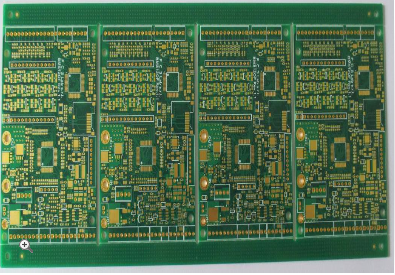-
 Agriculture
Agriculture
-
 Health-Care
Health-Care
-
 Environment
Environment
-
 Construction-Real-Estate
Construction-Real-Estate
-
 Tools-Hardware
Tools-Hardware
-
 Home-Garden
Home-Garden
-
 Furniture
Furniture
-
 Luggage-Bags-Cases
Luggage-Bags-Cases
-
 Medical-devices-Supplies
Medical-devices-Supplies
-
 Gifts-Crafts
Gifts-Crafts
-
 Sports-Entertainment
Sports-Entertainment
-
 Food-Beverage
Food-Beverage
-
 Vehicles-Transportation
Vehicles-Transportation
-
 Power-Transmission
Power-Transmission
-
 Material-Handling
Material-Handling
-
 Renewable-Energy
Renewable-Energy
-
 Safety
Safety
-
 Testing-Instrument-Equipment
Testing-Instrument-Equipment
-
 Construction-Building-Machinery
Construction-Building-Machinery
-
 Pet-Supplies
Pet-Supplies
-
 Personal-Care-Household-Cleaning
Personal-Care-Household-Cleaning
-
 Vehicle-Accessories-Electronics-Tools
Vehicle-Accessories-Electronics-Tools
-
 School-Office-Supplies
School-Office-Supplies
-
 Packaging-Printing
Packaging-Printing
-
 Mother-Kids-Toys
Mother-Kids-Toys
-
 Business-Services
Business-Services
-
 Commercial-Equipment-Machinery
Commercial-Equipment-Machinery
-
 Apparel-Accessories
Apparel-Accessories
-
 Security
Security
-
 Shoes-Accessories
Shoes-Accessories
-
 Vehicle-Parts-Accessories
Vehicle-Parts-Accessories
-
 Jewelry-Eyewear-Watches-Accessories
Jewelry-Eyewear-Watches-Accessories
-
 Lights-Lighting
Lights-Lighting
-
 Fabric-Textile-Raw-Material
Fabric-Textile-Raw-Material
-
 Fabrication-Services
Fabrication-Services
-
 Industrial-Machinery
Industrial-Machinery
-
 Consumer-Electronics
Consumer-Electronics
-
 Electrical-Equipment-Supplies
Electrical-Equipment-Supplies
-
 Electronic-Components-Accessories-Telecommunications
Electronic-Components-Accessories-Telecommunications
-
 Home-Appliances
Home-Appliances
-
 Beauty
Beauty
-
 Chemicals
Chemicals
-
 Rubber-Plastics
Rubber-Plastics
-
 Metals-Alloys
Metals-Alloys
- Masonry Materials
- Curtain Walls & Accessories
- Earthwork Products
- Fireproofing Materials
- Heat Insulation Materials
- Plastic Building Materials
- Building Boards
- Soundproofing Materials
- Timber
- Waterproofing Materials
- Balustrades & Handrails
- Bathroom & Kitchen
- Flooring & Accessories
- Tiles & Accessories
- Door, Window & Accessories
- Fireplaces & Stoves
- Floor Heating Systems & Parts
- Stairs & Stair Parts
- Ceilings
- Elevators & Escalators
- Stone
- Countertops, Vanity Tops & Table Tops
- Mosaics
- Metal Building Materials
- Multifunctional Materials
- Ladders & Scaffoldings
- Mouldings
- Corner Guards
- Decorative Films
- Formwork
- Building & Industrial Glass
- Other Construction & Real Estate
- Wallpapers/Wall panels
- HVAC System & Parts
- Outdoor Facilities
- Prefabricated Buildings
- Festive & Party Supplies
- Bathroom Products
- Household Sundries
- Rain Gear
- Garden Supplies
- Household Cleaning Tools & Accessories
- Lighters & Smoking Accessories
- Home Storage & Organization
- Household Scales
- Smart Home Improvement
- Home Textiles
- Kitchenware
- Drinkware & Accessories
- Dinnerware, Coffee & Wine
- Home Decor
- Golf
- Fitness & Body Building
- Amusement Park Facilities
- Billiards, Board Game,Coin Operated Games
- Musical Instruments
- Outdoor Affordable Luxury Sports
- Camping & Hiking
- Fishing
- Sports Safety&Rehabilitation
- Ball Sports Equipments
- Water Sports
- Winter Sports
- Luxury Travel Equipments
- Sports Shoes, Bags & Accessories
- Cycling
- Other Sports & Entertainment Products
- Artificial Grass&Sports Flooring&Sports Court Equipment
- Scooters
- Food Ingredients
- Honey & Honey Products
- Snacks
- Nuts & Kernels
- Seafood
- Plant & Animal Oil
- Beverages
- Fruit & Vegetable Products
- Frog & Escargot
- Bean Products
- Egg Products
- Dairy Products
- Seasonings & Condiments
- Canned Food
- Instant Food
- Baked Goods
- Other Food & Beverage
- Meat & Poultry
- Confectionery
- Grain Products
- Feminie Care
- Hair Care & Styling
- Body Care
- Hands & Feet Care
- Hygiene Products
- Men's Grooming
- Laundry Cleaning Supplies
- Travel Size & Gift Sets
- Room Deodorizers
- Other Personal Care Products
- Pest Control Products
- Special Household Cleaning
- Floor Cleaning
- Kitchen & Bathroom Cleaning
- Oral Care
- Bath Supplies
- Yellow Pages
- Correction Supplies
- Office Binding Supplies
- Office Cutting Supplies
- Board Erasers
- Office Adhesives & Tapes
- Education Supplies
- Pencil Cases & Bags
- Notebooks & Writing Pads
- File Folder Accessories
- Calendars
- Writing Accessories
- Commercial Office Supplies
- Pencil Sharpeners
- Pens
- Letter Pad/Paper
- Paper Envelopes
- Desk Organizers
- Pencils
- Markers & Highlighters
- Filing Products
- Art Supplies
- Easels
- Badge Holder & Accessories
- Office Paper
- Printer Supplies
- Book Covers
- Other Office & School Supplies
- Stationery Set
- Boards
- Clipboards
- Stamps
- Drafting Supplies
- Stencils
- Electronic Dictionary
- Books
- Map
- Magazines
- Calculators
- Baby & Toddler Toys
- Educational Toys
- Classic Toys
- Dress Up & Pretend Play
- Toy Vehicle
- Stuffed Animals & Plush Toys
- Outdoor Toys & Structures
- Balloons & Accessories
- Baby Food
- Children's Clothing
- Baby Supplies & Products
- Maternity Clothes
- Kids Shoes
- Baby Care
- Novelty & Gag Toys
- Dolls & Accessories
- Puzzle & Games
- Blocks & Model Building Toys
- Toddler Clothing
- Baby Clothing
- Kids' Luggage & Bags
- Arts, Crafts & DIY Toys
- Action & Toy Figures
- Baby Appliances
- Hobbies & Models
- Remote Control Toys
- Promotional Toys
- Pregnancy & Maternity
- Hygiene Products
- Kid's Textile&Bedding
- Novelty & Special Use
- Toy Weapons
- Baby Gifts
- Baby Storage & Organization
- Auto Drive Systems
- ATV/UTV Parts & Accessories
- Marine Parts & Accessories
- Other Auto Parts
- Trailer Parts & Accessories
- Auto Transmission Systems
- Train Parts & Accessories
- Universal Parts
- Railway Parts & Accessories
- Auto Brake Systems
- Aviation Parts & Accessories
- Truck Parts & Accessories
- Auto Suspension Systems
- Auto Lighting Systems
- New Energy Vehicle Parts & Accessories
- Auto Steering Systems
- Wheels, Tires & Accessories
- Bus Parts & Accessories
- Auto Performance Parts
- Cooling System
- Go-Kart & Kart Racer Parts & Accessories
- Air Conditioning Systems
- Heavy Duty Vehicle Parts & Accessories
- Auto Electrical Systems
- Auto Body Systems
- Auto Engine Systems
- Container Parts & Accessories
- Motorcycle Parts & Accessories
- Refrigeration & Heat Exchange Equipment
- Machine Tool Equipment
- Food & Beverage Machinery
- Agricultural Machinery & Equipment
- Apparel & Textile Machinery
- Chemical Machinery
- Packaging Machines
- Paper Production Machinery
- Plastic & Rubber Processing Machinery
- Industrial Robots
- Electronic Products Machinery
- Metal & Metallurgy Machinery
- Woodworking Machinery
- Home Product Manufacturing Machinery
- Machinery Accessories
- Environmental Machinery
- Machinery Service
- Electrical Equipment Manufacturing Machinery
- Industrial Compressors & Parts
- Tobacco & Cigarette Machinery
- Production Line
- Used Industrial Machinery
- Electronics Production Machinery
- Other Machinery & Industrial Equipment
- Camera, Photo & Accessories
- Portable Audio, Video & Accessories
- Television, Home Audio, Video & Accessories
- Video Games & Accessories
- Mobile Phone & Accessories
- Electronic Publications
- Earphone & Headphone & Accessories
- Speakers & Accessories
- Smart Electronics
- TV Receivers & Accessories
- Mobile Phone & Computer Repair Parts
- Chargers, Batteries & Power Supplies
- Used Electronics
- VR, AR, MR Hardware & Software
- Projectors & Presentation Equipments
- Other Consumer Electronics
- Cables & Commonly Used Accessories
- Computer Hardware & Software
- Displays, Signage and Optoelectronics
- Discrete Semiconductors
- Wireless & IoT Module and Products
- Telecommunications
- Connectors, Terminals & Accessories
- Development Boards, Electronic Modules and Kits
- Circuit Protection
- Sensors
- Isolators
- Audio Components and Products
- Integrated Circuits
- Power Supplies
- Relays
- RF, Microwave and RFID
- Electronic Accessories & Supplies
- Passive Components
- PCB & PCBA
- Air Quality Appliances
- Home Appliance Parts
- Heating & Cooling Appliances
- Small Kitchen Appliances
- Laundry Appliances
- Water Heaters
- Water Treatment Appliances
- Refrigerators & Freezers
- Personal Care & Beauty Appliances
- Major Kitchen Appliances
- Cleaning Appliances
- Second-hand Appliances
- Smart Home Appliances
- Other Home Appliances
- Energy Chemicals
- Inorganic Chemicals
- Basic Organic Chemicals
- Agrochemicals
- Admixture & Additives
- Catalysts & Chemical Auxiliary Agents
- Pigments & Dyestuff
- Coating & Paint
- Daily Chemicals
- Polymer
- Organic Intermediate
- Adhesives & Sealants
- Chemical Waste
- Biological Chemical Products
- Surface Treatment Chemicals
- Painting & Coating
- Chemical Reagents
- Flavor & Fragrance
- Non-Explosive Demolition Agents
- Other Chemicals
- Custom Chemical Services
EMI Reduction Techniques in PCB Layout for Sensitive Filter Amplifier Systems
In the realm of modern electronics, sensitive filter amplifier systems are critical components in applications ranging from medical devices to communication equipment, where signal integrity and accuracy are paramount. However, these systems are highly susceptible to electromagnetic interference (EMI), which can degrade performance, introduce noise, and lead to operational failures. As electronic devices become more compact and operate at higher frequencies, the challenge of mitigating EMI in printed circuit board (PCB) layouts has never been more pressing. This article delves into essential EMI reduction techniques tailored for sensitive filter amplifier systems, offering practical insights to help engineers design robust, interference-free circuits. By exploring strategies such as grounding, component placement, and shielding, readers will gain a comprehensive understanding of how to safeguard their designs against the pervasive threat of EMI, ensuring reliable performance in even the most demanding environments.
Strategic Grounding and Power Distribution
Effective grounding is a cornerstone of EMI reduction in PCB layouts for sensitive filter amplifier systems. A well-designed ground plane provides a low-impedance return path for currents, minimizing voltage fluctuations and reducing electromagnetic emissions. In multi-layer PCBs, dedicating one or more layers to a solid ground plane can significantly enhance noise immunity. For instance, in analog filter amplifiers, separating analog and digital grounds while connecting them at a single point helps prevent noise coupling from digital circuits. This star-point grounding technique ensures that high-frequency noise does not corrupt the sensitive analog signals, thereby maintaining the amplifier's fidelity.
Moreover, power distribution networks must be optimized to suppress EMI. By using decoupling capacitors placed close to the power pins of active components, such as operational amplifiers in filter stages, transient currents are localized, reducing radiated emissions. Additionally, employing ferrite beads or inductors in power lines can filter out high-frequency noise before it reaches the amplifier. It is crucial to analyze the impedance of the power planes and ensure they are adequately sized to handle current demands without introducing resonance, which can amplify EMI. Simulations with tools like SPICE can aid in predicting and mitigating potential grounding issues early in the design phase.
Component Placement and Routing Techniques
Proper component placement is vital for minimizing EMI in sensitive filter amplifier systems. Placing critical components, such as the filter stages and amplifiers, away from noisy elements like oscillators or switching regulators can reduce inductive and capacitive coupling. For example, in a low-pass filter amplifier used in audio applications, positioning the filter components close to the input and output connectors shortens signal paths, decreasing the antenna effect that can radiate EMI. Grouping related components together, such as those in the same filter stage, also helps contain electromagnetic fields and simplifies routing.
When it comes to routing, adhering to best practices like minimizing loop areas in high-current paths is essential. Large loops act as antennas, emitting or receiving interference; thus, traces for differential signals should be routed parallel and close together to cancel out common-mode noise. Using controlled impedance traces for high-frequency signals prevents reflections and signal integrity issues. Furthermore, avoiding right-angle turns in traces reduces the risk of EMI radiation due to impedance discontinuities. In multi-layer designs, routing sensitive signals on inner layers sandwiched between ground planes can provide additional shielding, as demonstrated in RF amplifier layouts where even minor routing errors can lead to significant performance degradation.
Shielding and Filtering Strategies
Shielding is an effective method to contain EMI within sensitive areas of a PCB. By enclosing critical components, such as the filter amplifier circuitry, in metal shields or cans, external electromagnetic fields are blocked from interfering with the signals. This is particularly important in mixed-signal systems where digital noise can easily couple into analog sections. For instance, in a medical device amplifier, a shielded enclosure can prevent external RF interference from distorting vital signal measurements. The shields must be properly grounded to ensure they act as Faraday cages, diverting EMI away from sensitive components.
In addition to physical shielding, incorporating filtering at various stages of the amplifier system can suppress conducted EMI. Using passive components like capacitors, inductors, and resistors in pi-filters or T-filters at the input and output ports attenuates high-frequency noise. For example, a common-mode choke placed in series with the signal path can reduce common-mode emissions without affecting differential signals. It is also beneficial to integrate EMI filters directly into the PCB layout, such as by using embedded components or surface-mount ferrites, to save space and enhance performance. Testing with spectrum analyzers during prototyping can validate the effectiveness of these filtering techniques, ensuring compliance with EMI standards like CISPR or FCC regulations.
Material Selection and Layer Stackup
The choice of PCB materials and layer stackup plays a significant role in EMI reduction for sensitive filter amplifier systems. High-frequency laminates with low dielectric loss, such as Rogers or FR-4 with specific characteristics, can minimize signal attenuation and dispersion. For instance, in a high-gain amplifier operating in the GHz range, using materials with stable permittivity helps maintain signal integrity and reduces EMI generation. The thickness of the dielectric layers also affects impedance control; precise calculations during stackup design ensure that transmission lines match the required impedance, preventing reflections that can cause EMI.
A well-planned layer stackup, with alternating signal and ground layers, provides inherent shielding and reduces crosstalk. In a typical four-layer PCB for a filter amplifier, placing the signal layers between ground and power planes creates a microstrip or stripline configuration that confines electromagnetic fields. This arrangement lowers radiation and improves noise immunity. Additionally, using via stitching around sensitive areas connects ground planes multiple times, reducing ground loops and enhancing EMI performance. Simulations with electromagnetic field solvers can optimize the stackup before fabrication, saving time and costs while achieving robust EMI mitigation.
REPORT































































































































































































































































































































































































































































































































































































